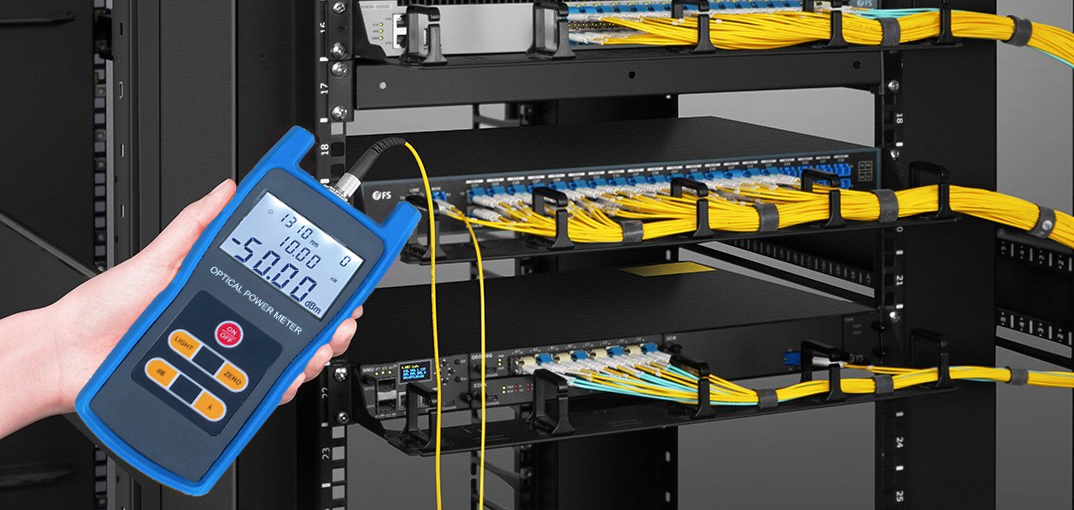Discover the Value of Optical Fiber Testing in Modern Telecom
In the world of modern-day telecommunications, the significance of optical fibre testing can not be overstated, as it offers as the foundation for making certain network reliability and performance. What are the certain advantages that regular testing offers, and how might it shape the future landscape of telecoms?

Comprehending Optical Fiber Screening
Optical fibre screening is an important procedure in telecommunications that makes sure the stability and performance of fiber optic networks. This testing incorporates a variety of procedures designed to examine the physical and practical attributes of optical fibers - optical fibre diameter analyser. Secret parameters evaluated include optical power loss, data transfer capability, and fault place, which are vital for maintaining high-quality interaction links
The screening process typically entails making use of specific equipment such as Optical Time-Domain Reflectometers (OTDR) and Optical Power Meters. OTDRs are utilized to determine and identify faults, entwines, and ports within the fiber, while power meters determine the transmitted light signal toughness to determine efficiency.
Furthermore, screening is carried out at various stages, consisting of during installment, upkeep, and troubleshooting, to guarantee that the network fulfills market criteria and operational demands. Compliance with criteria set by companies like the International Telecommunication Union (ITU) and the Telecoms Sector Association (TIA) is extremely important.
Benefits of Routine Examining
Regular testing of optical fibers returns numerous advantages that dramatically enhance network dependability and efficiency. One of the main advantages is the very early discovery of possible issues, such as breaks or deterioration in the fiber, which can lead to costly downtime if left unaddressed (fibre testing equipment). By recognizing these troubles proactively, telecoms suppliers can minimize service interruptions and make sure regular connection for their customers
Furthermore, routine screening assists to preserve the stability of signal high quality. As optical fibers age, their performance can be affected by elements such as environmental conditions and physical tension. Routine analyses enable the surveillance of signal loss and total transmission efficiency, ensuring that the network runs at optimum degrees.
One more significant benefit is compliance with sector requirements. Regular screening sustains adherence to regulative needs, therefore alleviating legal and monetary risks connected with non-compliance. It boosts the overall life expectancy of the fiber infrastructure by assisting in timely maintenance and repair work.

Typical Testing Techniques
Examining optical fibers employs different approaches to make sure the integrity and performance of telecommunications networks. Amongst one of the most common techniques is Optical Time Domain Reflectometry (OTDR), which assesses the entire length of the fibre by sending a pulse of light and determining the representations triggered by flaws or breaks. This technique gives detailed information about the place and severity of mistakes.
One more common technique is using Optical Power Meters, which gauge the quantity of light sent with the fiber. This strategy aids establish the loss of signal strength, our website ensuring that it satisfies market requirements. Furthermore, Visual Fault Locators (VFL) are utilized to determine breaks or extreme bends in the fiber by predicting a visible laser light into the cord.
Insertion loss screening is also crucial, as it evaluates the loss of signal power resulting from connections and mates within the network. Furthermore, making use of Polarization Setting Diffusion (PMD) screening examines the effect of fibre characteristics on signal integrity.
Each of these approaches plays a crucial role in preserving the performance and reliability of optical fiber networks, eventually adding to seamless telecoms operations.
Effect On Network Performance
The integrity and efficiency of optical fiber networks directly affect general network performance. In modern telecoms, the effectiveness of data transmission counts heavily on the high quality of the optical fibres made use of. Any type of degradation in the fiber's condition-- whether as a result of physical damage, contamination, or too much bending-- can lead to boosted depletion and signal loss, dramatically affecting data honesty and speed.
Normal optical fibre screening is important to identify and remedy potential concerns before they materialize as network failings or downturns. Strategies such as Optical Time Domain Reflectometry (OTDR) and insertion loss testing make it possible for specialists to gauge the performance of fibre web links precisely. These tests not just review the physical condition of the fibers yet likewise ensure conformity with visit this page market criteria, thus guarding the network's reliability.
Additionally, a well-maintained optical fibre network contributes to minimized functional costs and improved customer contentment, as end-users experience fewer disruptions and higher data rates. Eventually, the emphasis on rigorous optical fibre testing methods offers as a keystone for maintaining durable telecoms framework, guaranteeing that service suppliers can fulfill the expanding demands for transmission capacity and connection in today's electronic age.
Future Fads in Testing
As we look ahead, improvements in technology are poised to reshape optical fibre testing in telecommunications. The increase of automation and expert system (AI) is anticipated to improve the performance and precision of screening procedures. Automated testing systems can carry out comprehensive evaluations with very little human intervention, considerably decreasing the capacity for errors and quickening time-to-deployment.
Moreover, the assimilation of maker discovering algorithms will enable predictive maintenance, allowing network companies to visualize potential concerns prior to they intensify right into failings. This aggressive technique not only improves network reliability however also enhances functional costs.
Another arising pattern is the my site growth of portable screening gadgets that provide real-time evaluation - optical fibre diameter analyser. These gadgets will empower technicians to do on-site diagnostics quickly, helping with quicker resolutions and enhancing solution quality
The expansion of 5G networks further demands the evolution of screening approaches. As transmission capacity demands boost, standard testing strategies may no much longer are sufficient. Innovative options such as optical time-domain reflectometry (OTDR) and progressed spooky evaluation will come to be vital in guaranteeing the honesty and efficiency of high-speed connections.

Conclusion
In final thought, optical fiber screening is essential for making sure the honesty and dependability of modern telecoms networks. Routine screening practices not only assist recognize possible issues such as signal loss and mistakes yet also add to improved network efficiency and consumer fulfillment. As the demand for seamless connectivity proceeds to expand, the fostering of innovative testing approaches will play an important duty in keeping premium network standards and sustaining the advancing landscape of telecommunications.
 Ben Savage Then & Now!
Ben Savage Then & Now! Joshua Jackson Then & Now!
Joshua Jackson Then & Now! Loni Anderson Then & Now!
Loni Anderson Then & Now! Lisa Whelchel Then & Now!
Lisa Whelchel Then & Now! Bill Cosby Then & Now!
Bill Cosby Then & Now!